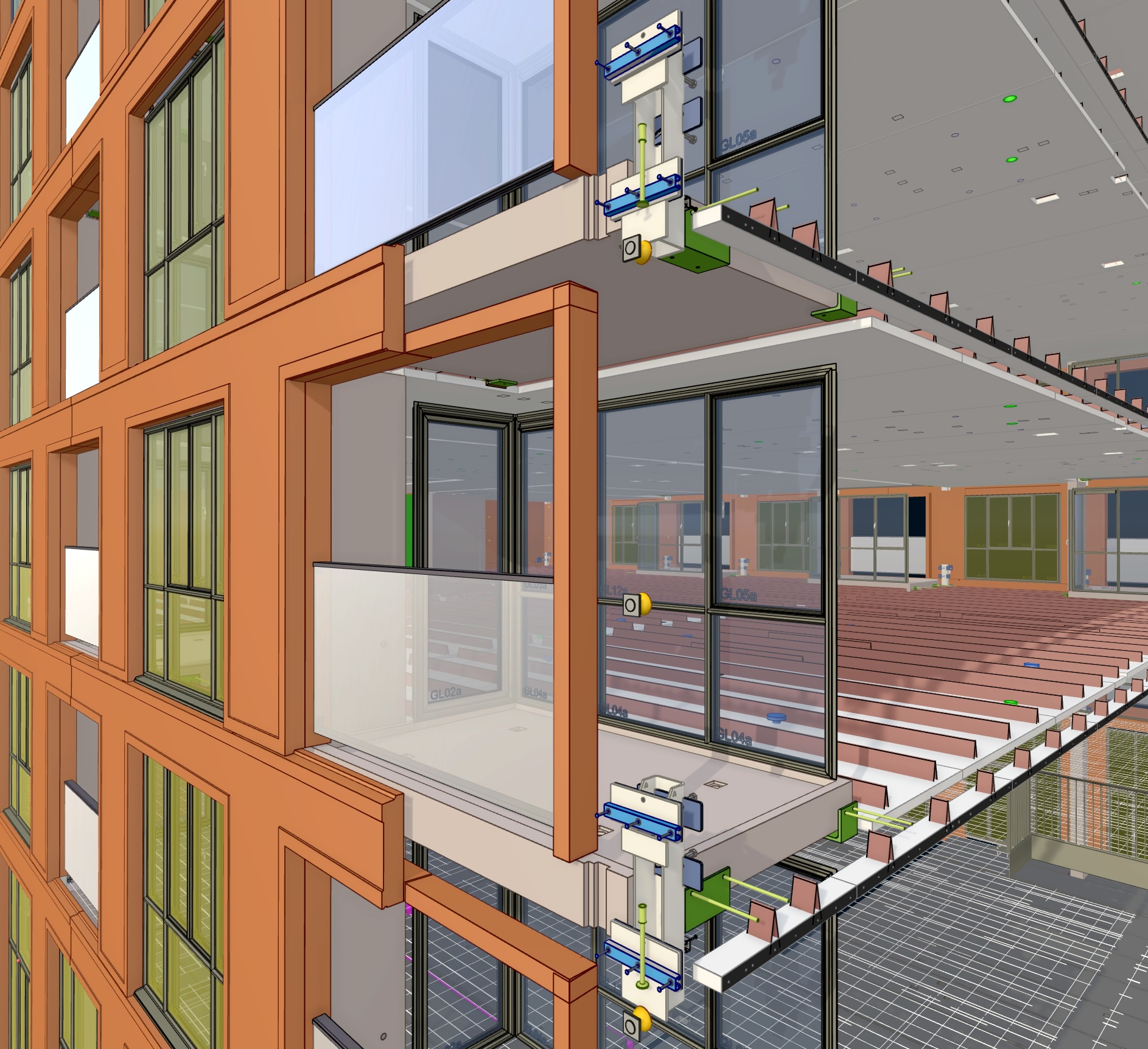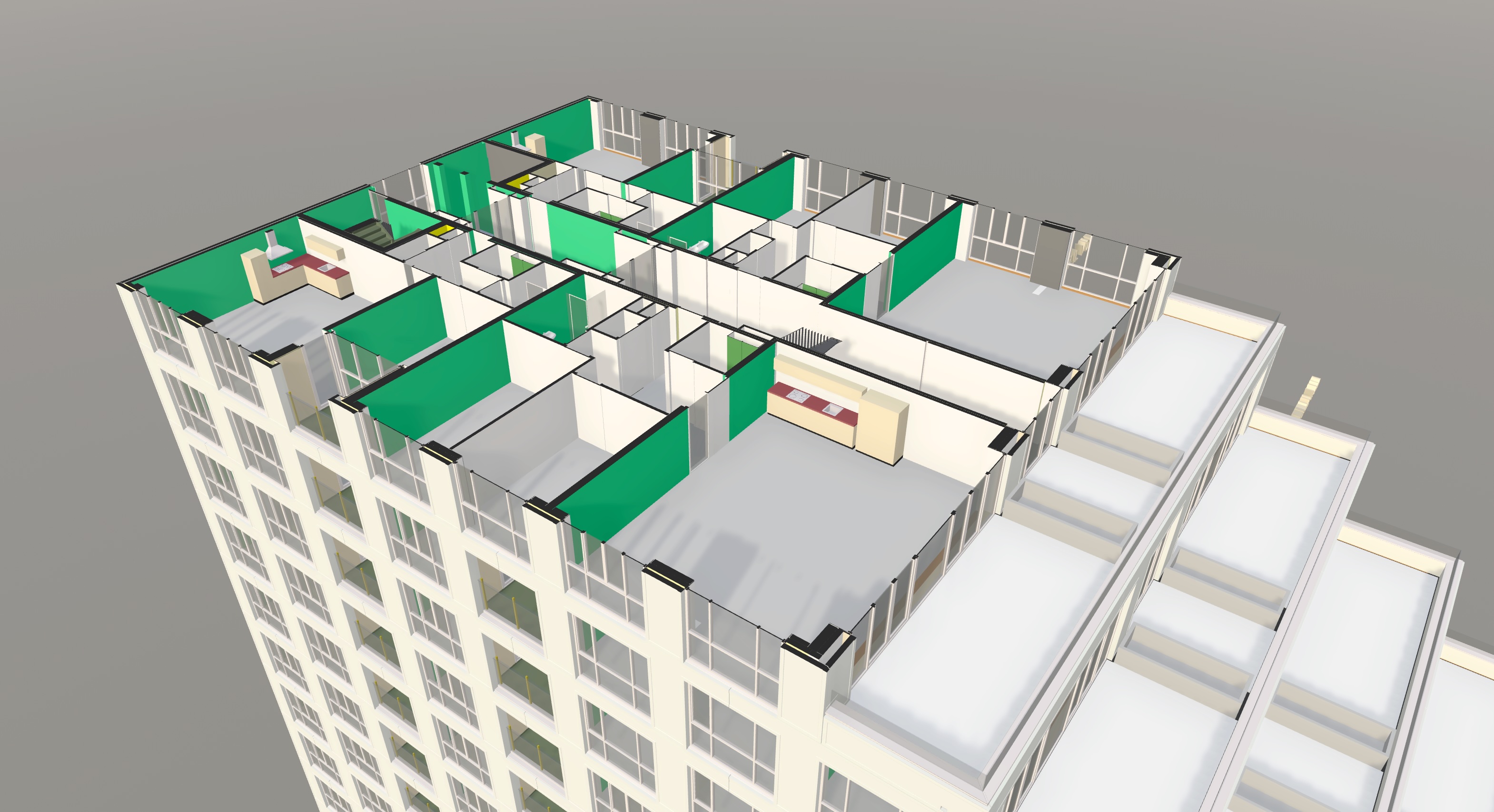Qonic’s mission to revolutionize the AEC industry
10,000 hours of practice. This is the common rule of thumb how long it takes to become an expert in a given field. In the Qonic team, there is a wealth of 200+ years combined experience with 3D modelling for the AEC industry. That’s why we consider Qonic as a start-through, rather than a start-up. 3D modelling is at the core of Qonic’s expertise.
We believe the time is now to build a cloud-based BIM solution, with a central 3D model to enhance digital collaboration at scale, and more streamlined flows of information. Software users in many other industries around the world have already explored ways to work in the cloud. While this shift has taken place in most sectors, the AEC industry is still stuck with massive, monolithic on-premises software programs, expensive to buy and hard to use.
Our mission is to revolutionize this industry, with modern technology that is powerful, scalable, and collaborative.
Qonic introduces cloud-first technology built for non-technical users, easy and intuitive enough to use to ensure that everyone can extract maximum benefit from it, without weeks of training. The 3D modelling engine is at the center of this technology.
A mechanical approach to BIM
Today’s BIM solutions are built around a workflow in which exchanging 2D construction documents is the default way to share information. However, a real digital twin approach requires a model centric approach where the model drives processes. This model-based workflow spans the entire process from design, up to the delivery of the building, and facilities management.
This kind of model-based workflow requires next-generation software delivering real design efficiency enabling the finest detailing of components.
The goal is to improve the quality of the models to enable real digital twins – a perfect match between digital and reality. Only this elevated level of development can support full detailing and exact model quantities during tendering and construction. The same holds true for price offerings and project planning, which should be linked directly to the model instead of being based on approximations and assumptions.

This workflow is already day-to-day reality in the world of mechanical design (for airplanes, cars, and the like). It’s often told that manufacturing processes in these sectors involve a notable degree of repetition, while buildings are mainly one-time projects. But here's the deal: instead of using these differences as an excuse for why AEC is lagging behind, Qonic is all about finding solutions.
We work on solutions to overcome these inconveniences by offering powerful yet easy-to-use 3D modeling. An important aspect of this is automation of repetitive and error-prone modelling tasks. Think of tools to automate modelling of real-life building systems (wall assemblies, manufacturable products, etc.) and details (connections, sills, insulation stones, roof caps, etc.).
A model centric approach can hold all information of the project and each piece of information can be generated on the spot.
While 2D documents are a snapshot of the truth at one moment in time, a model-based approach always enables real-time and up-to-date information. BIM models are the constantly evolving version of the constantly evolving truth. That’s what Qonic is working on.
Our solid modelling engine
As Qonic evolves fast towards a first commercial release, we are eager to offer you a glimpse into the ongoing developments within our labs. The coming weeks and months we will prepare some demo movies of modelling features that show the power of Qonic. These demo movies are prototypes, meant to show the power of our modelling engine, but still lack the user interface that is needed to make it into the commercial product. In other words, these demos are previews, expected to be shipped in a future release.
At the start of these series, we want to explain in a practical comprehensive way how Qonic is built and why we do the things we do – without going into deep scientific details. For readers who are interested in a deep dive in the history and details of solid modelling we refer to this article as a starting point.
In the AEC space, the two most common modelling paradigms are solid modelling and surface modelling. To support full detailing and exact model quantities, the only workable possibility for Qonic is solid modelling. While surface modelling is based on approximated (tessellated) geometry, solid geometry supports precise sectioning and quantity calculations. Especially for more complex operations – such as booleans, sweeping and NURBS manipulation – solid modelling is the way to go.
The Qonic modeller is not built just for simple rectangular geometry but also supports an elevated level of geometrical complexity.
We offer the same power as today’s mechanical modellers (like SolidWorks) yet with a 3D direct modelling interface (push-pull). An intuitive yet powerful modelling interface is needed to cater for the needs of today’s actual architecture. Users should not adapt themselves to the limitations in modelling capabilities of the software. Whether a building design consists of complex (NURBS) geometry or elements enriched with BIM information, both should be handled in a single 3D environment, instead of having to combine several products.
As we progress, all functionalities will also be made available as a complete set of APIs, allowing third party developers to use our modelling engine with the same ease as how it is integrated in Qonic.
A building as a product
We like the analogy of buildings as a product rather than a project. Every building can be conceived as a kit of parts, with fixed parts (like the structural frame of the building) and mechanical parts (ranging from a sprinkler head to an elevator). This again stresses the importance of managing all these elements – geometry and data – in one central model.

STEP is the international standard for representing (mechanical) product data in the manufacturing and engineering space. IFC, on the other hand, is a subset or specific implementation of the STEP standard, tailored for the AEC industry. Qonic already supports IFC for exchanging BIM information across different software applications. As STEP models are familiar to IFC models, it’s only a small step to bring both worlds in the future together in one centric model.
Bringing 3D modelling to the cloud
As explained in this first blog post, our goal is to bring powerful and intuitive 3D modelling to the cloud. This is not a clear-cut task, because modelling involves computation-heavy calculations, while even the most modern web browsers have limited resources.
This is the power of the Qonic technology stack: it allows manipulation of solids in a compact and efficient manner, so it can be done directly in the browser.
This avoids the latency that would occur if the modelling operations would be calculated server-side, and only the results would be transferred to the browser. This development requires a huge effort to achieve the kind of performance we offer today and still is a constant search for improvement. In the next set of blog posts, we will dive deeper in how we bring 3D modelling to the cloud, and discuss the details of model-centric collaboration solution for managing all models in a project, ranging from architectural, interior, structural, to engineering discipline models.
Join our community
Sign up
to Qonic and start exploring.